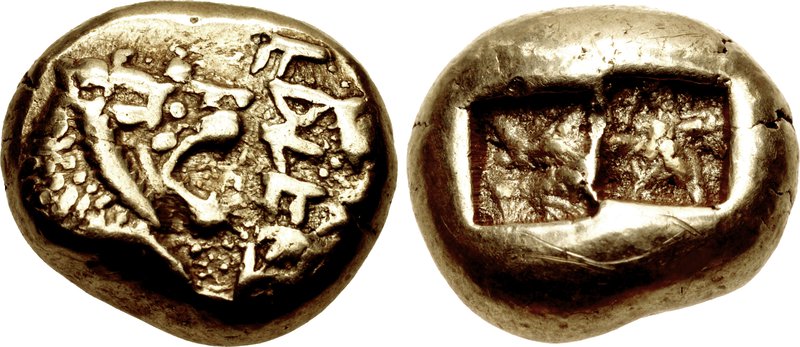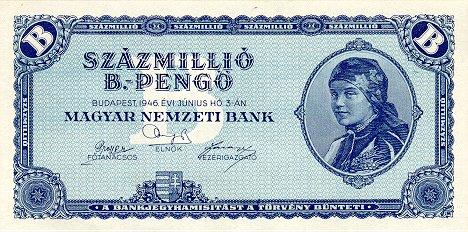|
Zaire (currency)
The zaire (French: ''zaïre'', code ) was the unit of currency of the Democratic Republic of the Congo and then of the Republic of Zaire from 1967 until 1997. All but six of the 79 series of banknotes issued bear the image of Mobutu Sese Seko. two distinct currencies have existed: The ''zaire'' (1967–1993, ), and the ''nouveau zaïre'' (1993–1998, ). History Zaire (1967–1993) The Zaire (french: Zaïre), symbol: "Z", or sometimes "Ƶ", was introduced in 1967, replacing the '' Congolese franc'' at an exchange rate of 1 zaire = 1000 francs. The zaire was subdivided into 100 ''makuta'' (singular: ''likuta'', symbol: "K"), each of 100 ''sengi'' (symbol: "s"). However, the sengi was worth very little and the only sengi denominated coin was the 10 sengi coin issued in 1967. Unusually for any currency, it was common practice to write cash amounts with three zeros after the decimal place, even after inflation had greatly devalued the currency. Inflation eventually caused denominat ... [...More Info...] [...Related Items...] OR: [Wikipedia] [Google] [Baidu] |
Democratic Republic Of The Congo
The Democratic Republic of the Congo (french: République démocratique du Congo (RDC), colloquially "La RDC" ), informally Congo-Kinshasa, DR Congo, the DRC, the DROC, or the Congo, and formerly and also colloquially Zaire, is a country in Central Africa. It is bordered to the northwest by the Republic of the Congo, to the north by the Central African Republic, to the northeast by South Sudan, to the east by Uganda, Rwanda, and Burundi, and by Tanzania (across Lake Tanganyika), to the south and southeast by Zambia, to the southwest by Angola, and to the west by the South Atlantic Ocean and the Cabinda exclave of Angola. By area, it is the second-largest country in Africa and the 11th-largest in the world. With a population of around 108 million, the Democratic Republic of the Congo is the most populous officially Francophone country in the world. The national capital and largest city is Kinshasa, which is also the nation's economic center. Centered on the Cong ... [...More Info...] [...Related Items...] OR: [Wikipedia] [Google] [Baidu] |
New Zaire (1993–1998)
The zaire (French: ''zaïre'', code ) was the unit of currency of the Democratic Republic of the Congo and then of the Republic of Zaire from 1967 until 1997. All but six of the 79 series of banknotes issued bear the image of Mobutu Sese Seko. two distinct currencies have existed: The ''zaire'' (1967–1993, ), and the ''nouveau zaïre'' (1993–1998, ). History Zaire (1967–1993) The Zaire (french: Zaïre), symbol: "Z", or sometimes "Ƶ", was introduced in 1967, replacing the '' Congolese franc'' at an exchange rate of 1 zaire = 1000 francs. The zaire was subdivided into 100 ''makuta'' (singular: ''likuta'', symbol: "K"), each of 100 ''sengi'' (symbol: "s"). However, the sengi was worth very little and the only sengi denominated coin was the 10 sengi coin issued in 1967. Unusually for any currency, it was common practice to write cash amounts with three zeros after the decimal place, even after inflation had greatly devalued the currency. Inflation eventually caused denominat ... [...More Info...] [...Related Items...] OR: [Wikipedia] [Google] [Baidu] |
Currencies Of Africa
A currency, "in circulation", from la, currens, -entis, literally meaning "running" or "traversing" is a standardization of money in any form, in use or circulation as a medium of exchange, for example banknotes and coins. A more general definition is that a currency is a ''system of money'' in common use within a specific environment over time, especially for people in a nation state. Under this definition, the British Pound Sterling (£), euros (€), Japanese yen (¥), and U.S. dollars (US$)) are examples of (government-issued) fiat currencies. Currencies may act as stores of value and be traded between nations in foreign exchange markets, which determine the relative values of the different currencies. Currencies in this sense are either chosen by users or decreed by governments, and each type has limited boundaries of acceptance - i.e. legal tender laws may require a particular unit of account for payments to government agencies. Other definitions of the term "curre ... [...More Info...] [...Related Items...] OR: [Wikipedia] [Google] [Baidu] |
Modern Obsolete Currencies
Modern may refer to: History * Modern history ** Early Modern period ** Late Modern period *** 18th century *** 19th century *** 20th century ** Contemporary history * Moderns, a faction of Freemasonry that existed in the 18th century Philosophy and sociology * Modernity, a loosely defined concept delineating a number of societal, economic and ideological features that contrast with "pre-modern" times or societies ** Late modernity Art * Modernism ** Modernist poetry * Modern art, a form of art * Modern dance, a dance form developed in the early 20th century * Modern architecture, a broad movement and period in architectural history * Modern music (other) Geography *Modra, a Slovak city, referred to in the German language as "Modern" Typography * Modern (typeface), a raster font packaged with Windows XP * Another name for the typeface classification known as Didone (typography) * Modern, a generic font family name for fixed-pitch serif and sans serif fonts (f ... [...More Info...] [...Related Items...] OR: [Wikipedia] [Google] [Baidu] |
Currencies Of The Democratic Republic Of The Congo
A currency, "in circulation", from la, currens, -entis, literally meaning "running" or "traversing" is a standardization of money in any form, in use or circulation as a medium of exchange, for example banknotes and coins. A more general definition is that a currency is a ''system of money'' in common use within a specific environment over time, especially for people in a nation state. Under this definition, the British Pound Sterling (£), euros (€), Japanese yen (¥), and U.S. dollars (US$)) are examples of (government-issued) fiat currencies. Currencies may act as stores of value and be traded between nations in foreign exchange markets, which determine the relative values of the different currencies. Currencies in this sense are either chosen by users or decreed by governments, and each type has limited boundaries of acceptance - i.e. legal tender laws may require a particular unit of account for payments to government agencies. Other definitions of the term " ... [...More Info...] [...Related Items...] OR: [Wikipedia] [Google] [Baidu] |
Hyperinflation
In economics, hyperinflation is a very high and typically accelerating inflation. It quickly erodes the real value of the local currency, as the prices of all goods increase. This causes people to minimize their holdings in that currency as they usually switch to more stable foreign currencies. When measured in stable foreign currencies, prices typically remain stable. Unlike low inflation, where the process of rising prices is protracted and not generally noticeable except by studying past market prices, hyperinflation sees a rapid and continuing increase in nominal prices, the nominal cost of goods, and in the supply of currency. Typically, however, the general price level rises even more rapidly than the money supply as people try ridding themselves of the devaluing currency as quickly as possible. As this happens, the real stock of money (i.e., the amount of circulating money divided by the price level) decreases considerably.Bernholz, Peter 2003, chapter 5.3 Almost all ... [...More Info...] [...Related Items...] OR: [Wikipedia] [Google] [Baidu] |
Central Bank Of The Congo
The Central Bank of the Congo (french: Banque centrale du Congo) is the central bank of the Democratic Republic of the Congo. The bank's main offices are on Boulevard Colonel Tshatshi in La Gombe in Kinshasa. The bank is engaged in developing policies to promote financial inclusion and is a member of the Alliance for Financial Inclusion. On 5 May 2012 the Central Bank of the Democratic Republic of Congo announced it would be making specific commitments to financial inclusion under the Maya Declaration. Regional operations The central bank operates a network of regional branches across the DRC, the largest country in Sub-Saharan Africa. Branches can be found in Lubumbashi, Goma, Kamina, Kasumbalesa, Kikwit, Tshikapa, Ilebo and Matadi. In cities where the central bank is not present, a commercial bank can be appointed to represent it; Trust Merchant Bank performs such a role in Likasi and Kolwezi. History From 1886 to 1908, King Leopold II of the Belgians ruled the Congo Fr ... [...More Info...] [...Related Items...] OR: [Wikipedia] [Google] [Baidu] |
Special Drawing Rights
Special drawing rights (SDRs, code ) are supplementary foreign exchange reserve assets defined and maintained by the International Monetary Fund (IMF). SDRs are units of account for the IMF, and not a currency ''per se''. They represent a claim to currency held by IMF member countries for which they may be exchanged. SDRs were created in 1969 to supplement a shortfall of preferred foreign exchange reserve assets, namely gold and U.S. dollars. The ISO 4217 currency code for special drawing rights is and the numeric code is ''960''. SDRs are allocated by the IMF to countries, and cannot be held or used by private parties. The number of SDRs in existence was around XDR 21.4 billion in August 2009. During the global financial crisis of 2009, an additional XDR 182.6 billion was allocated to "provide liquidity to the global economic system and supplement member countries' official reserves". By October 2014, the number of SDRs in existence was XDR 204 bil ... [...More Info...] [...Related Items...] OR: [Wikipedia] [Google] [Baidu] |
Belgian Franc
The Belgian franc ( nl, Belgische frank, french: Franc belge, german: Belgischer Franken) was the currency of the Kingdom of Belgium from 1832 until 2002 when the Euro was introduced. It was subdivided into 100 subunits, each known as a in Dutch, in French or a in German. History The ''gulden'' (guilder) of 20 ''stuivers'' was the currency of present-day Belgium from the 15th to 19th centuries until its replacement in 1832 by the Belgian franc. Its value differed from the Dutch guilder, gulden of the Dutch Republic during the latter's separation from Belgium from 1581 to 1816. Standard coins issued in Belgium include: * From 1618: the :nl:Patagon, ''patagon'' or ''Albertusthaler'' of 24.55 g fine silver, worth 2.4 gulden or 48 stuiver (or 10.23 g fine silver per gulden) * From 1754: the ''kronenthaler'' of 25.71 g fine silver, worth 3.15 gulden ''currency'' or 2.7 ''gulden of exchange'' (9.52 g silver per exchange gulden). The French Écu#Silver écu of 1726, silver écu of 26. ... [...More Info...] [...Related Items...] OR: [Wikipedia] [Google] [Baidu] |
Bank Of Zaire
The Central Bank of the Congo (french: Banque centrale du Congo) is the central bank of the Democratic Republic of the Congo. The bank's main offices are on Boulevard Colonel Tshatshi in La Gombe in Kinshasa. The bank is engaged in developing policies to promote financial inclusion and is a member of the Alliance for Financial Inclusion. On 5 May 2012 the Central Bank of the Democratic Republic of Congo announced it would be making specific commitments to financial inclusion under the Maya Declaration. Regional operations The central bank operates a network of regional branches across the DRC, the largest country in Sub-Saharan Africa. Branches can be found in Lubumbashi, Goma, Kamina, Kasumbalesa, Kikwit, Tshikapa, Ilebo and Matadi. In cities where the central bank is not present, a commercial bank can be appointed to represent it; Trust Merchant Bank performs such a role in Likasi and Kolwezi. History From 1886 to 1908, King Leopold II of the Belgians ruled the Congo Fr ... [...More Info...] [...Related Items...] OR: [Wikipedia] [Google] [Baidu] |



